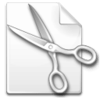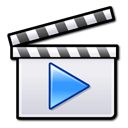Fundamentals of narrative film editing
Stop!!!
Please go to the new editing course.
 Fundamentals of Fundamentals of
Narrative film editing
Click here to see other courses in filmmaking and film scoring
|
This course is for editing a dramatic scene
- Which type of editing?
- This course covers only one (1) type of film editing: editing scripted dialog (drama).
- For people who want to make narrative motion pictures, editing a dramatic conversation is the most important and the most challenging form of film editing.
- Not for documentaries nor multi-media
- This course is only for editing of a dramatic conversation. If you are interested in other documentaries nor multi-media, do not take this course.
- Editing a conversations is completely backwards to editing everything else.
- Real hands-on editing
- This course quickly goes through all the basics of editing a dramatic scene from TV dramas.
- These lessons gives you hands-on experience editing actual motion pictures and television dramas. It's the real thing!
- Required disks
- Each lesson requires a disk. After the first disk, I will loan you the disks but you must return them. To get the first one, see the qualification to the left.
|

Who may take this course?
This course now requires an entrance exam. This is an extremely simple scene for you to edit.
Entrance exam disk
This disk cost $20 from the Star Movie Shop
but you can get this disk for free if you:
- or
Contact your instructor
- Your instructor for this film editing class is Robert Elliott. You can email me by clicking here.

|
What are Practice Scenes?
- Practice scenes are the film dailies from actual motion pictures or television dramas. These are unedited scenes which have been digitized, ready for editing on your computer.
- Drama, not documentaries
- These scenes are not from documentaries. Instead, they contain scripted dialog from narrative productions. That means a dramatic conversation.
- Editing a dramatic scene is totally different from editing a documentary which is a completely different technology using completely different methods. If you want to learn to edit documentaries, corporate video, event video or multimedia, these lessons will only confuse you.
- Editing for motion pictures
- Narrative film editing gives you an understanding of the basic concepts of telling a dramatic story. Once you have learned to edit a conversation, you are ready for more advanced editing of motion pictures (action scenes which are not covered here).
|
Disks requires for this course
- Not available to the public
- This course uses the disks from the Star Movie Shop
. As far as I know, this is the only company in the world which offers unedited scenes for film students to practice dialog editing from dramatic scenes.
- The Star Movie Shop
is not open to the general public. They only sell through selected film schools or to qualified film students. You can qualify by purchasing the Entrance Exam Disk and editing the short scene on the disk.
- I will loan you the disks
- So for this course, I will loan you the disks. When you are finished with a lesson, you return the disk to receive the next lesson.
- QuickTime Pro required
- Most of the film dailies require QuickTime to play. Fortunately, QuickTime film clips can be converted to other formats by using Movie Player with QuickTime Pro or other utilities programs.
|
site map
 Fundamentals of
Fundamentals of



